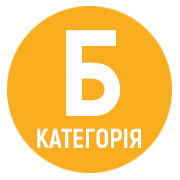INTERNATIONAL LEGAL MECHANISMS FOR ADVANCING WOMEN’S RIGHTS IN ISLAMIC STATES: THE ROLE OF GLOBAL AND REGIONAL INSTITUTIONS
DOI:
https://doi.org/10.32782/ehrlichsjournal-2025-12.07Keywords:
women’s rights; Islamic law; international law; gender equality; human rights; Sharia law; legal reforms; international organisations; United NationsAbstract
This article examines the role of international and regional institutions in development of women’s rights in Islamic states, focusing on the effectiveness of legal instruments and the challenges associated with their enforcement. The research highlights the contributions of the United Nations (UN), UN Women, the Organization of Islamic Cooperation (OIC), the League of Arab States (LAS), and African regional institutions, analyzing their strategies, legal frameworks, and policies aimed at advocating women’s rights in Islamic societies. The promotion and protection of women’s rights within Islamic states have been a subject of growing importance in international law, especially the intersection of global human rights norms and Islamic legal traditions. It was found that the international treaties such as the Convention on the Elimination of All Forms of Discrimination Against Women (CEDAW) and regional legal frameworks provide mechanisms for advancing gender equality and women’s rights empowerment, but their implementation remains complex due to historical traditions, cultural norms, and religious interpretations. Some states have made significant progress in legal reforms, particularly in areas such as education, economic participation, and political engagement, but we can observe that many challenges still exist. These include reservations to international treaties, weak enforcement mechanisms, and socio-cultural barriers that limit women’s full legal autonomy. We can see the role of regional organizations is particularly critical. Institutions like the OIC and LAS aim to balance human rights obligations with religious and cultural considerations. However, the effectiveness of these organizations is often hindered by their non-binding resolutions and the varying levels of commitment from member states. The findings indicate that international and regional institutions have contributed to raising awareness and fostering legal reforms, but significant gaps remain in implementation. It was found that there is a need for a context-sensitive approach that respects cultural and religious values but at the same time improving legal protections for women. Developing institutional frameworks, increasing advocacy efforts, and promoting legal education are important steps toward ensuring greater gender equality in Islamic legal systems.
References
UN General Assembly (1979). Convention on the Elimination of All Forms of Discrimination Against Women. United Nations. Treaty Series. Vol. 1249. 18 December 1979. Retrieved from: https://www.refworld.org/legal/agreements/unga/1979/en/13757.
Organization of Islamic Cooperation. (2021). OIC women and development report. Progress towards the Implementation of the OIC Plan of Action for the Advancement of Women (OPAAW). OIC Publications.
African Union strategy for gender equality and women’s empowerment. (2025). African Union. Retrieved from: https://au.int/en/articles/au-strategy-gender-equality-and- womens-empowerment.
League of Arab States (1994). Arab Charter on Human Rights. Retrieved from: https://www.refworld.org/legal/agreements/las/1994/en/10672.
International Institute for Democracy and Electoral Assistance. (2017). Regional organizations, gender equality and the political empowerment of women.
Vishwanath, T. (2012). Opening Doors: Gender Equality in the Middle East and North Africa. Washington, DC: World Bank.
United Nations. (2024). Iran must prioritize women’s rights, right to life, and improve transparency, says UN expert. Retrieved from: https://www.ohchr.org/en/press-releases/2024/11/iran-must-prioritise-womens-rights-right-lifeand-improve-transparency-says.
UN Women – Arab States. (2015). Arab league presents regional action plan for women, peace and security. Retrieved from: https://arabstates.unwomen.org/en/news/stories/2015/10/arab-league-presents-regional-action-plan.
Rishmawi, M. (2015). The League of Arab States human rights standards and mechanisms. Society Foundations and Cairo Institute for Human Rights Studies.
Mayer, A. E. (2013). Islam and Human Rights: Tradition and Politics (5th ed.). Routledge. Retrieved from: https://doi.org/10.4324/9780429495120.
Baderin, M. (2003). International Human Rights and Islamic Law. Oxford: Oxford University Press. American Journal of International Law.
Mir-Hosseini, Z. (2006). Muslim Women’s Quest for Equality: Between Islamic Law and Feminism. Critical Inquiry, 32 (4), p. 629–645.
An-Na’im, A. (2010). Islam and the Secular State: Negotiating the Future of Shari’a. Harvard University Press.
Langworthy, M., Naguib, R. (2024). Through the Eye of the Needle: Lessons in Women’s Empowerment and Public Policy from the Arab Gulf. In: Naguib, R. (eds). Women’s Empowerment and Public Policy in the Arab Gulf States. Gulf Studies. Vol 11. Springer, Singapore. https://doi.org/10.1007/978-981-99-6006-4_7.
Human Rights Watch (2023). Middle East and North Africa: End curbs on women’s mobility. Retrieved from: https://www.hrw.org/news/2023/07/18/middle-east-and-north- africa-end-curbs-womens-mobility.







